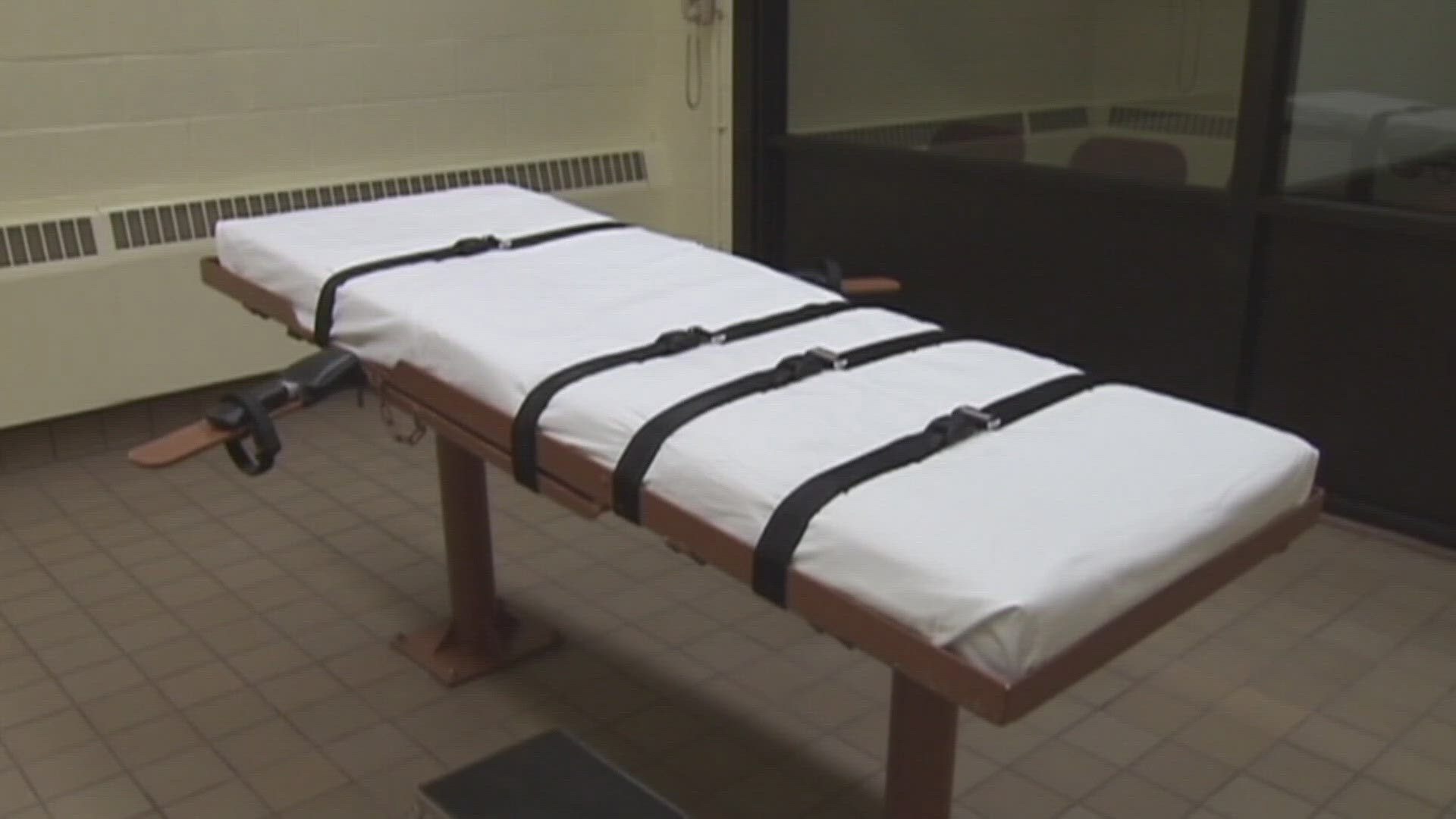COLUMBUS, Ohio — It has been almost six years since Ohio carried out an execution, and some lawmakers believe a new method for conducting sentences could end the delays. They’re looking to a measure adding nitrogen hypoxia to the list of eligible protocols for capital punishment. The method asphyxiates a condemned person by replacing the air they breathe, a mixture of mostly nitrogen and oxygen, with pure nitrogen.
The proposal’s backers argue Ohio’s long delay in executions amounts to an undeclared — and unjust — moratorium on lawfully imposed sentences. And looking around the country at other states and the federal government carrying out lethal injections, they’re not exactly buying claims Ohio can’t get access to the necessary drugs.
Meanwhile, opponents argue that without the explicit blessing of the U.S. Supreme Court, the method sits on shaky legal footing. If the American Veterinary Medical Association rejected it as a method for euthanizing most mammals, they ask, isn’t it likely to violate prohibitions on cruel and unusual punishment?
Ohio Prosecuting Attorneys Association Executive Director Lou Tobin argued during a committee hearing Tuesday that execution by nitrogen hypoxia has already been carried out in Alabama, and a handful of other states have approved the protocol. Although witnesses of Alabama’s execution of Kenneth Smith reported he writhed in apparent pain, Tobin argued defendants in Ohio have actually asked courts that the method be made available. Quoting from a recent filing, he noted nitrogen hypoxia was praised for its effectiveness, lack of pain and track record with people using it for assisted dying protocols in other countries.
Even granting that the Alabama execution was painful or distressing, Tobin argued, “The Constitution doesn’t guarantee a pain-free death.”
“We don’t want to cause them unnecessary pain,” he added, “but whatever they experience as part of an execution pales in comparison to the pain and suffering that they’ve inflicted on their victims.”
Trumbull County Prosecutor Dennis Watkins argued the state should do whatever is necessary to carry out sentences. “If it includes nitrogen gas, I’m for it,” he said, “If it includes the firing squad, I’m for it.” Watkins alluded to a 2009 case in which Kenneth Biros was executed using a single drug after an execution with the standard three-drug cocktail failed earlier that year. He praised then-Gov. Ted Strickland for carrying out the “last dying wish” of the victim’s mother.
“We have a fair system in Ohio, and that system has worked,” he said. “And it has worked three times in Trumbull County — if we have the willpower.”
Attorney General Dave Yost criticized the state’s acceptance of pharmaceutical companies refusing to sell it the necessary drugs.
“Call it a private sector pardon,” he said. “It’s preposterous, and it ought to be rejected out of hand. This bill will put an end to the stalemate and restore Ohio’s sovereign power to act.”
He argued Ohioans still favor the death penalty because juries keep voting for it. It only takes one juror, Yost emphasized, to scuttle a death sentence.
Speaking outside, he argued the time for delaying executions is over. If the problem is really just the supply of drugs, then nitrogen hypoxia offers a solution. But if, on the other hand, the problem is a moral objection, that debate should be hashed out openly.
“You’re allowed to have a change of heart, but at least own it,” Yost insisted. “This stuck in the mud, nothing happens, we don’t keep the promises but we don’t have the guts to say we’re not going to, is just wrong.”
It’s difficult to separate arguments for an additional capital punishment protocol from arguments about capital punishment itself. State Rep. Richard Brown, D-Canal Winchester, criticized proponents several times for that kind of bait and switch — couching their arguments in upholding existing law rather than the merits of nitrogen hypoxia itself.
“Again, this is not about the death penalty,” he said, growing frustrated. “I haven’t told you if I’m for it, or against it. For all you know, I’m for it.”
“The issue is how to execute the death penalty — that’s the issue,” he went on. “And it seems to me, the use of nitrogen hypoxia is cruel, unusual, and most likely will violate the Eighth Amendment of the Constitution.”
Brown brought up the 2020 veterinary guidelines that rejected nitrogen hypoxia for euthanizing most mammals.
“While we’re polling the group,” Rep. Dani Isaacsohn, D-Cincinnati, chimed in, “I am opposed to the death penalty.”
Isaacsohn expressed skepticism at capital punishment’s deterrent effect. He noted the gruesome cases supporters reference only underscore its ineffectiveness. Tobin acknowledged, “the death penalty has unquestionably lost some of its deterrent effect, as we’ve drawn out that appeals process over the years.” But he insisted “justice sometimes just demands more.”
Committee chair Rep. Bob Peterson, R-Selina, cut in, to redirect debate toward nitrogen hypoxia rather than the death penalty writ large.
Rep. Bill Seitz, R-Cincinnati, took up a different provision related to confidentiality for companies providing the materials for executions.
“Do you think by doing that,” Seitz asked Tobin, “we might suddenly be able to get the supply of the three-drug protocol that we were somehow unable to get for these many years?”
“I think that is certainly the hope,” he said before allowing, “obviously I can’t predict that that will come to fruition.” Tobin noted some of the states that have continued carrying out executions have those confidentiality protections in place. “And I have to believe that that has provided them greater access maybe than Ohio,” he said.

